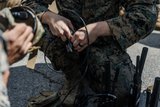Australia looks towards space with force restructure, investment and training
Australia is looking to improve its presence in space with a focus on communications and creating a dedicated segment of its defence forces committed to the domain.
Raytheon BBN Technologies demonstrated the successful transmission of voice and data across a wireless mobile ad hoc network that was in a constant state of flux, mimicking the communications challenges that military networks confront in tactical use.
These results mark milestone achievements for the Wireless Network After Next (WNaN) program, which is sponsored by the Defense Advanced Research Projects Agency and the Air Force Research Laboratory.
Raytheon BBN Technologies is a wholly owned subsidiary of Raytheon Company.
"The results prove that WNaN works in the field with affordable, commercially available radios," said Jason Redi, WNaN principal investigator, Raytheon BBN Technologies. "With these results, we are one step closer to getting this much needed, first-of-its-kind technology to the battlefield and putting a reliable network in the hands of every warfighter."
The WNaN network operates on low-cost radio hardware to establish a wireless network that adapts to changing conditions and enables warfighters to communicate on the battlefield despite frequent disruptions and high demand. Raytheon BBN Technology network software operates in concert with radio hardware developed by COBHAM.
Specific achievements during the field experiment included:
Source: Raytheon

Australia is looking to improve its presence in space with a focus on communications and creating a dedicated segment of its defence forces committed to the domain.

The Portuguese company’s naval communications system is in service across more than a dozen countries. It has turned to its home nation for support in developing a new vehicle based C2 system.

The Vision4ce Deep Embedded Feature Tracking (DEFT) technology software is designed to process video and images by blending traditional computer vision with artificial intelligence (AI) algorithms to present actionable information from complex environments.

Persistent Systems has been cleared by National Security Agency (NSA) to transmit sensitive data on commercial networks. The devices are added to the NSA’s Commercial Solutions for Classified (CSfC) component list which also includes other companies’ products providing the same security.

The release of the UK’s Strategic Defence Review (SDR) has been long promised as mid-year. It is possible it could be as early as 2 June although the UK Ministry of Defence (MoD) continues to play its cards close to its chest.

Intelsat outlines how its multi-orbit SATCOM architecture is enhancing connectivity and resilience for special operations forces operating in degraded and contested environments.